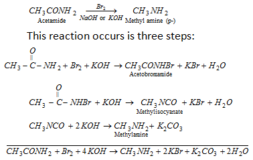Dinitrogen Tetra oxide

source : slide player.com
Dissociation of N2O4 (Dinitrogen Tetra oxide)
N2O4  2NO2
2NO2
Let ‘a’ moles of N2O4 in a closed vessel of Volume ‘v’ litre
N2O4  2NO2
2NO2
Initial Concn (mole/l) a/V 0
Concn at equi. (mole/l) ( a-x)/V 2x/V
Applying law of mass action,
Kc =[NO2]2 /[N2O4]
= [2x/V ]2 /[ ( a-x)/V]
=4×2 / [( a-x)/V]
Factors affecting Equilibrium –
- Effect of Pressure-
If pressure is increased the value of ‘V’ decreases to maintain the constt. value of Kc, x must also decrease hence the dissociation of N2O4 decreases with increase of pressure. Low pressure favours the dissociation of N2O4
- Effect of Temperature-
- N2O4
 2NO2 – QK.Cal
2NO2 – QK.Cal
The dissociation of N2O4 is an endothermic reaction, thus the values of equilibrium constant increases with increase in temperature (because Kc =Kf/Kb )
It is concluded that dissociation of N2O4 increases with increase in temperature.
- Effect of Concn–
If N2O4 is added in equilibrium mixture the rate of forward reaction increases. Therefore dissociation of N2O4 increases. In case NO2 is added the rate of backward reacn increases & dissociation of N2O4 decreases.
Q – The vapour density of N2O4 at acertain temp. is 30. calculate % of dissociation of N2O4 at this temp.?
Ans. N2O4  2NO2
2NO2
initial mole 1 0
moles at equi. 1-x 2x
total moles at equi. =1-x +2x =1+x
( 1 +x) /1 =D/d
d =30
D = mol.wt. /2 =92 /2 =46
(1 +x) /1 =D/d
( 1+x) /1 =46/30
x = 0.533
% of x =53.3 % Ans.







